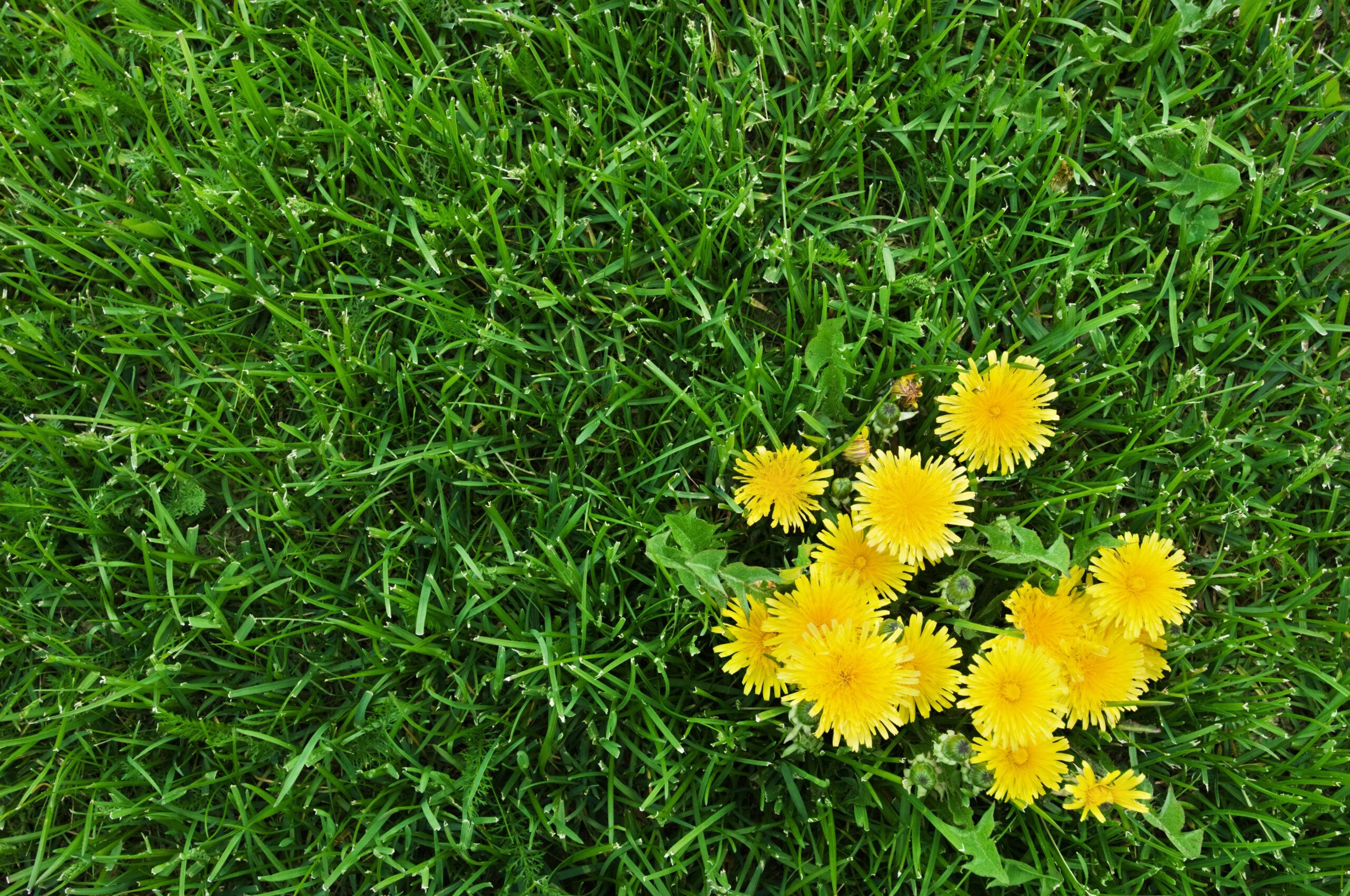Maintaining a weed-free yard can feel like an endless battle. With some weeds capable of producing up to 30,000 seeds in a single season and those seeds potentially remaining viable in the soil for decades, it’s no wonder many homeowners feel overwhelmed. However, with the right approach, you can significantly reduce weed growth and maintain a beautiful, healthy landscape.
In this guide, we’ll equip you with practical methods to prevent, control, and eliminate weeds.
Prevention: Your First Line of Defense for Weeds
Preventing weeds from establishing themselves is far easier and more effective than trying to eliminate them once they’ve taken root. By creating conditions that favor your desired plants and discourage weed growth, you can significantly reduce the need for weed control measures.
Proper Lawn Care Techniques
A healthy, dense lawn is your best defense against weeds. Here are some key lawn care practices that help prevent weed growth:
- Fertilize appropriately: Use the right amount of fertilizer at the right time.
- Mow at the proper height: Keep your grass at the higher end of its recommended mowing height. Doing so shades the soil, preventing weed seeds from germinating.
- Overseed bare spots: Don’t allow weeds to establish themselves in bare areas of your lawn.
- Water deeply but infrequently: This encourages deep root growth in your grass, making it more resilient and better able to compete with weeds.
Strategic Mulching Methods
Mulch is an excellent tool for weed prevention. It blocks sunlight, preventing weed seeds from germinating, and can also make it easier to remove any weeds that do manage to sprout. Here’s how to mulch effectively:
- Choose the right mulch: Different types of mulch work better in different situations. Sawdust, for example, can be effective in paths because it depletes nitrogen in the soil.
- Keep mulch away from plant stems: To prevent rot and disease, leave a few inches of space around the base of plants.
- Lay the right depth: Depending on the type, apply 2–4 inches of mulch. Coarser mulches can be applied more deeply.
- Use landscape fabric: Consider laying landscape fabric before applying mulch in areas prone to persistent weeds. This approach provides an extra barrier against weed growth.
Effective Weed Control Strategies
Despite your best prevention efforts, some weeds will inevitably appear. When they do, we recommend having an effective control strategy ready.
Chemical-Free Weed Management
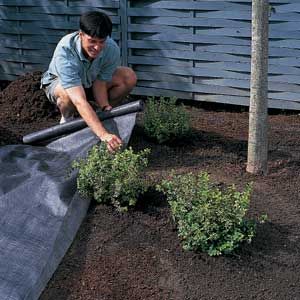
For those who prefer to avoid chemical herbicides, there are several effective natural methods for controlling weeds:
- Boiling water: Pour boiling water directly onto weeds to kill them. This method is particularly effective for weeds growing in cracks or crevices.
- Hand-pulling: This is often the most effective method for small areas or isolated weeds. Be sure to remove the entire root system.
- Smothering: Cover weedy areas with cardboard or newspaper, then add a layer of mulch on top. This method blocks light and eventually kills the weeds.
- Vinegar mixture: A solution of vinegar and dish soap can be an effective natural herbicide. However, be cautious as this mixture can also harm desired plants.
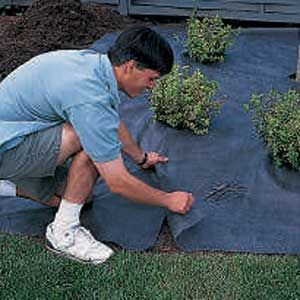
Safe and Selective Herbicide Use
When used correctly, herbicides can be an effective tool for weed control. Here are some tips for safe and effective herbicide use:
- Apply at the right time: Many herbicides are most effective when applied to young, actively growing weeds.
- Choose the right product: Use selective herbicides that target specific types of weeds without harming your lawn or other plants.
- Consider pre-emergent herbicides: These prevent weed seeds from germinating and can be an effective part of your overall weed management strategy.
- Follow instructions carefully: Always read and follow the product label for application rates and safety precautions.
Specialized Tools for Weed Removal
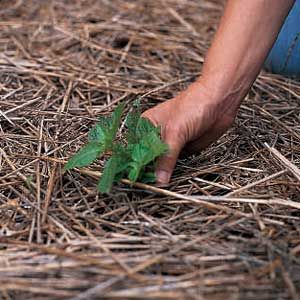
Having the right tools can make weed removal much more manageable.
Manual Weed Removal Tools
Several specialized tools can make manual weed removal more efficient:
- Dandelion digger: This tool has a forked end that helps remove the entire root system of tap-rooted weeds like dandelions.
- Hand cultivator: This tool is excellent for loosening soil and uprooting small weeds in garden beds.
- Hoe: A sharp hoe can quickly dispatch young weeds by cutting them off at or just below the soil surface.
- Weed puller: These tools use leverage to pull out weeds and roots while minimizing soil disturbance.
Innovative Weed Control Technologies
Technology has brought new tools to the fight against weeds:
- Flame weeders: These tools use heat to kill weeds. They’re handy for weeds in cracks and crevices.
- Robotic weeders: While primarily used in agriculture, smaller versions for home use are becoming available.
- Smart sprayers: These devices can identify weeds and apply herbicide only where needed, reducing overall chemical use.
- Weed steamers: Similar to flame weeders, these use hot steam to kill weeds.
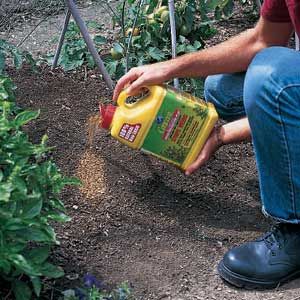
Maintaining a Weed-Free Landscape
Keeping your landscape weed-free is an ongoing process that requires regular attention and care.
Regular Monitoring and Maintenance
Consistent monitoring allows you to catch and address weed problems early. Here are some tips:
- Act quickly: Remove weeds as soon as you spot them before they can spread or go to seed.
- Keep garden beds tidy: Remove dead plant material and keep beds well-mulched to discourage weed growth.
- Maintain healthy plants: Well-maintained plants can better compete with weeds for resources.
- Walk your property regularly: Look for new weed growth, especially in problem areas.
Seasonal Weed Management Tips
Different seasons bring different weed challenges. Here’s a seasonal approach to weed management:
- Spring: Apply pre-emergent herbicides and overseed bare spots in the lawn.
- Summer: Stay on top of mowing; water deeply but infrequently.
- Fall: Remove annual weeds before they set seed, and apply post-emergent herbicides if needed.
- Winter: Plan for next year, maintain mulch layers, and remove any winter weeds.
Common Mistakes To Avoid in Weed Control
Even with the best intentions, it’s easy to make mistakes that can encourage weed growth—being aware of these common errors.
Overwatering and Overfertilizing
Both overwatering and overfertilizing can create conditions that favor weed growth:
- Overfertilizing: Too much fertilizer can lead to rapid, weak growth in your lawn, making it more susceptible to weeds. It can also feed certain types of weeds, giving them an advantage over your desired plants.
- Overwatering: Frequent, shallow watering encourages shallow root growth in your lawn, making it less resilient and more prone to weed invasion. It can also create damp conditions that some weeds love.
Improper Mulch Application
While mulch is an excellent weed deterrent when used correctly, improper application can encourage weed growth:
- Mulching too close to plant stems: This can lead to rot and disease, weakening your plants and making them less able to compete with weeds.
- Mulching too deeply: A layer of mulch that’s too thick can suffocate your plants and create a perfect environment for weeds to thrive.
- Allowing your mulch to fully decompose: As organic mulches break down, they provide nutrients for weeds. Refresh your mulch regularly to maintain its weed-suppressing properties.
- Using contaminated mulch: Some mulches, particularly those containing hay or grass clippings, may contain weed seeds.
Where To Find Weed Control Products
Lee Valley Tools Ltd.
Box 1780
Ogdensburg, NY 13669-6780
800/871-8158
Telescoping Crack Weeder
True Temper Hardware
Box 8859
Camp Hill, PA 17011
800/393-1846
Scuffle hoe
Drip irrigation information and supplies:
Irrigation & Green Industry Network
916C N. Formosa Ave.
Los Angeles, CA 90046
www.igin.com
323/878-0318
Raindrip Inc.
2250 Agate Ct.
Simi Valley, CA 93065
www.raindrip.com
877/237-3747
Request the free “Drip Watering Made Easy” guide.
